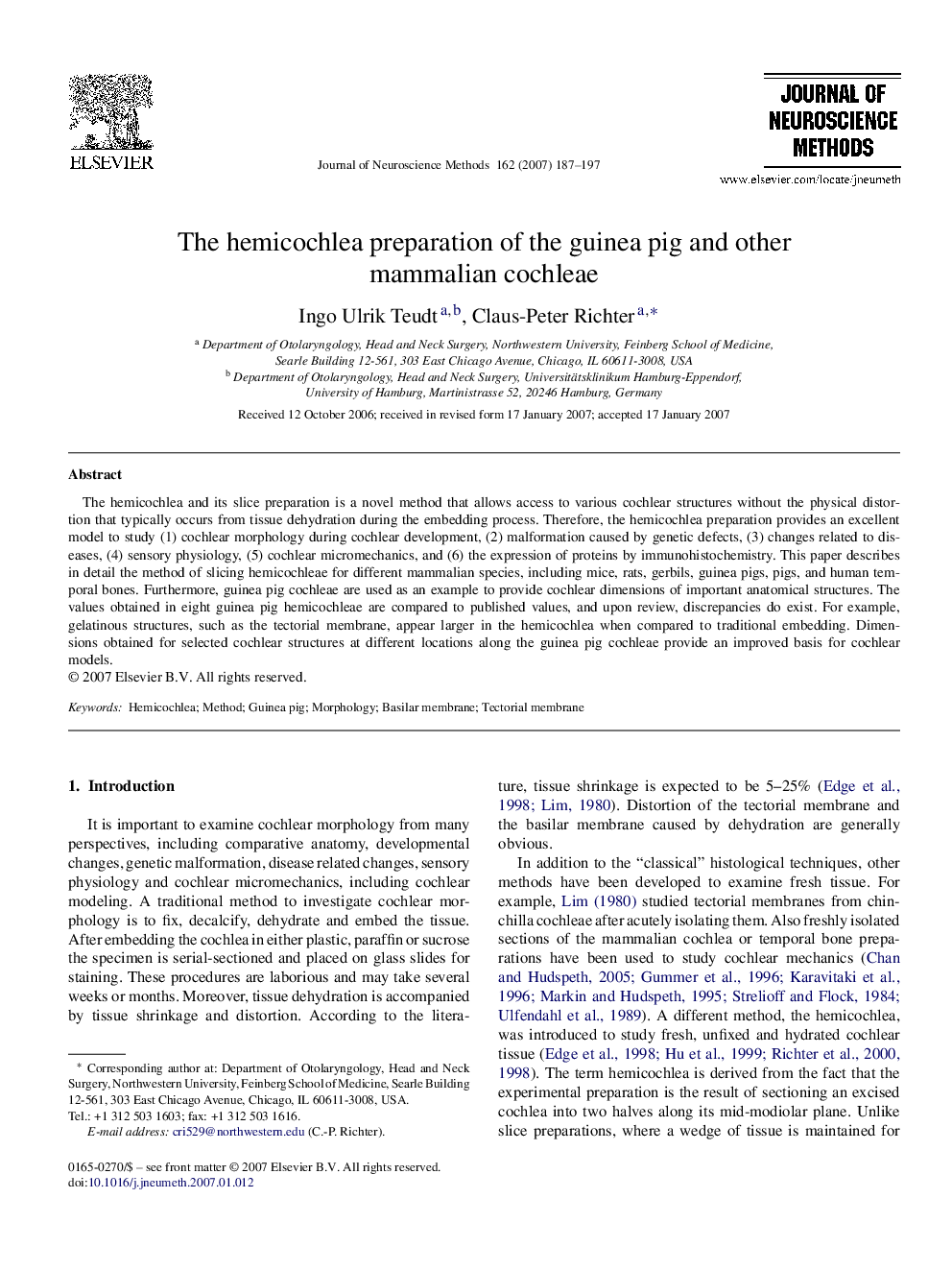| Article ID | Journal | Published Year | Pages | File Type |
|---|---|---|---|---|
| 6270472 | Journal of Neuroscience Methods | 2007 | 11 Pages |
The hemicochlea and its slice preparation is a novel method that allows access to various cochlear structures without the physical distortion that typically occurs from tissue dehydration during the embedding process. Therefore, the hemicochlea preparation provides an excellent model to study (1) cochlear morphology during cochlear development, (2) malformation caused by genetic defects, (3) changes related to diseases, (4) sensory physiology, (5) cochlear micromechanics, and (6) the expression of proteins by immunohistochemistry. This paper describes in detail the method of slicing hemicochleae for different mammalian species, including mice, rats, gerbils, guinea pigs, pigs, and human temporal bones. Furthermore, guinea pig cochleae are used as an example to provide cochlear dimensions of important anatomical structures. The values obtained in eight guinea pig hemicochleae are compared to published values, and upon review, discrepancies do exist. For example, gelatinous structures, such as the tectorial membrane, appear larger in the hemicochlea when compared to traditional embedding. Dimensions obtained for selected cochlear structures at different locations along the guinea pig cochleae provide an improved basis for cochlear models.
